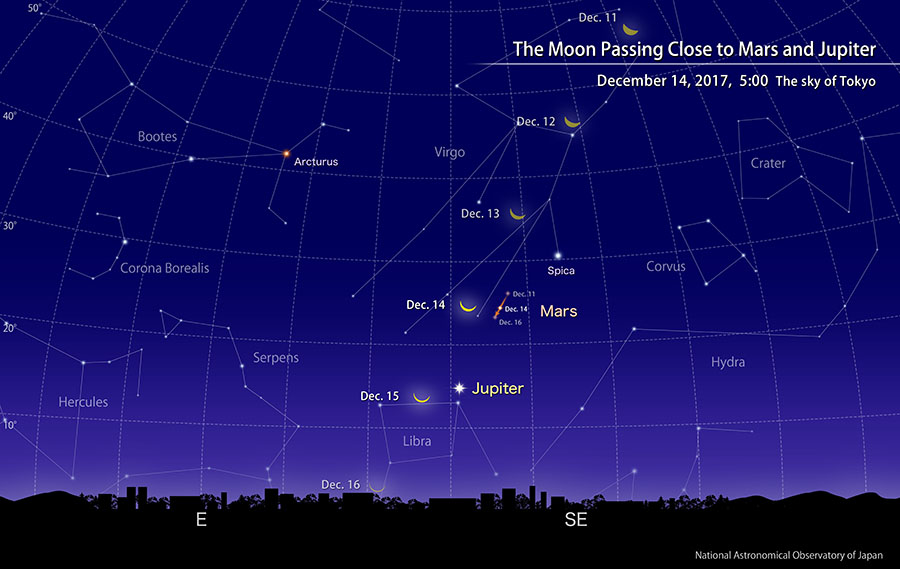The Moon Passing Close to Mars and Jupiter (December, 2017)

Enjoy the Medley of the Moon and Planets after the Meteors
Before the Sun rises, Jupiter shines brightly in the southeastern sky. And on the upper right of it, red Mars appears dim. In addition, on the upper right of Mars, the 1st magnitude star Spica shines white in the constellation Virgo.
From December 13 to December 15, the thin Moon waning towards new phase passes close to these objects.
On the morning of the 13th, the Moon shines a little ways away on the upper left of Spica.
On the morning of the 14th, the Moon becomes thinner than the day before and moves to the left of Mars. Even though Mars is not as bright as Spica, the reddish color stands out in a sufficiently dark sky.
On the morning of the 15th, the Moon becomes even thinner and moves to the left of Jupiter. The medley of the bright Jupiter and the thin Moon will be a beautiful scene. If you look at the Moon carefully, you might observe the dark side of the Moon faintly. This phenomenon is called “earthshine.” This phenomenon occurs because the Moon is illuminated by the reflected light from the Earth.
The Geminid meteor shower is active around this time. Let’s enjoy the Moon and planets shining beautifully in the dawn after observing the meteors.
Reference
- Ephemeris Computation Office
- You can look up the rising and setting times for the Sun and the Moon, and the phases of the Moon in the “Koyomi Station” of the NAOJ Ephemeris Computation Office. With the “Sky Viewer” you can easily explore the appearance of a typical urban night sky (planets and constellations are visible). The Celestial Phenomena section of the glossary explains the planetary phenomena terms: greatest elongation, opposition, conjunction, stationary, etc.
- The Peak of the Geminid Meteor Shower
- How to observe the Geminids is described here.